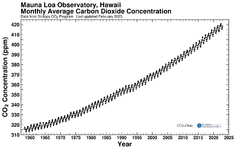lpetrich
Contributor
Applications For Installation Of Solar PV Systems In Cape Town Hit Record Levels - CleanTechnica
Renewable Energy Becomes A Flash Point In America's Culture Wars - CleanTechnica
Cape Town is the first city in South Africa to offer households and businesses cash for their excess rooftop solar power. The City is set to start paying businesses cash for power beginning next month, and residents will be able to start selling power for cash later this year.
Renewable Energy Becomes A Flash Point In America's Culture Wars - CleanTechnica
However,Minnesota Leads On Renewable Energy
Greenhouse gas emissions from the power sector in Minnesota have dropped 40% over the last 10 years. Today, 28% of that state’s energy coming from carbon-free sources like renewables, nuclear, and hydropower. Yet there is much more to do in order for the state to reach its carbon emissions goals.
This year, Minnesota has adopted a number of new policies designed to speed the adoption of renewable energy within its borders. The legislature passed and the governor has signed the Clean Energy And Efficient Buildings act, which will provide up to $80 million in incentives for solar, energy storage, microgrids, and energy resiliency.
Then about a similar case in Colorado in 2015.North Dakota Opposes Minnesota Renewables Push
As has become the norm in America, if someone is for something, a bunch of people will be opposed to it. Just west of Minnesota is North Dakota, which is proud of its coal-fired generating plants and likes to sell the electricity they make to Minnesota. The Flickertail State has threatened to sue its neighbor to the east, claiming the commerce clause of the US Constitution forbids Minnesota from refusing to accept North Dakota’s high carbon electricity.
...
In this case, NoDak might have a bit of a problem. “Minnesota is under no legal duty to prop up North Dakota power plants,” Michael Gerrard, founder of Columbia University’s Sabin Center for Climate Change Law, told Grist. He said Minnesota could not discriminate between in-state and out of state electricity generators, but that is not the situation here. The state is requiring clean power across the board, from in-state and outside sources.
And here’s the thing. That decision was written by Neil Gorsuch. “We have one of the conservative Supreme Court justices saying that a state clean energy standard is fine,” Gerrard said. “So I think the outlook, if this case gets to the Supreme Court, would be favorable to Minnesota.” Game, set, and match to Minnesota.

